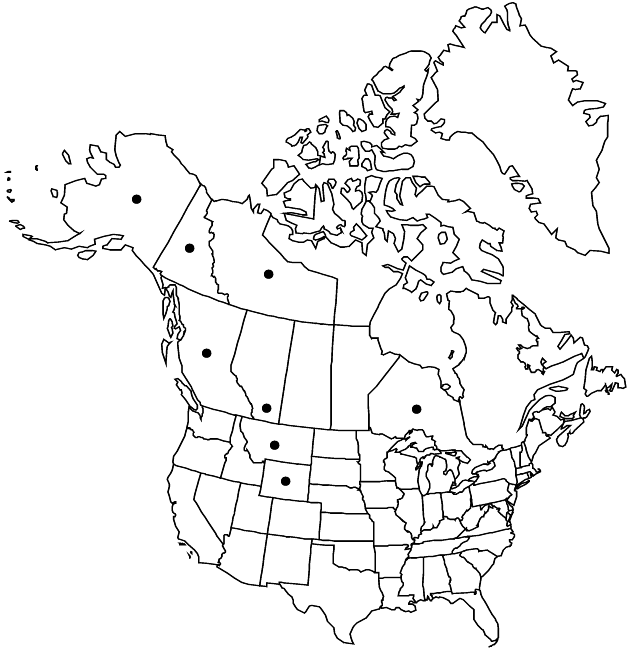Crepis elegans
Fl. Bor.-Amer. 1: 297. 1833.
Perennials, 6–30 cm (taproots deep, caudices stout). Stems 5–20, erect or ascending (often reddish brown, in loose clumps), ± dichotomously branched distally, glabrous. Leaves basal and cauline; petiolate (petiole bases clasping); blades spatulate or elliptic to ovate, 1–4 × 0.5–1.5 cm, margins coarsely dentate or entire, apices acute, faces glabrous. Heads 10–100+, in dense paniculiform arrays. Calyculi of 7–8 (blackish green), ovate, glabrous bractlets 1–2 mm. Involucres cylindric, 8–10 × 2–3 mm. Phyllaries 8–10, (blackish green) oblong, 8–10 mm, (margins scarious) apices acute or obtuse, faces glabrous. Florets 6–10; corollas yellow, 6–8 mm. Cypselae golden brown, fusiform (subterete or flattened), 4–5 mm, beaked (beaks delicate), ribs 10 (narrow, spiculate-roughened); pappi white, 4–5 mm. 2n = 14.
Phenology: Flowering Jun–Sep.
Habitat: Stream banks, gravelly flats, sandbars, roadsides
Elevation: 1300–2000 m
Distribution

Alta., B.C., N.W.T., Ont., Yukon, Alaska, Mont., Wyo.
Discussion
Crepis elegans is recognized by its loose, cespitose habit, relatively small spatulate leaves, blackish green, glabrous phyllaries, and beaked cypselae. It is thought to be closely related to C. nana, and, possibly, derived from it (E. B. Babcock 1947).
Selected References
None.